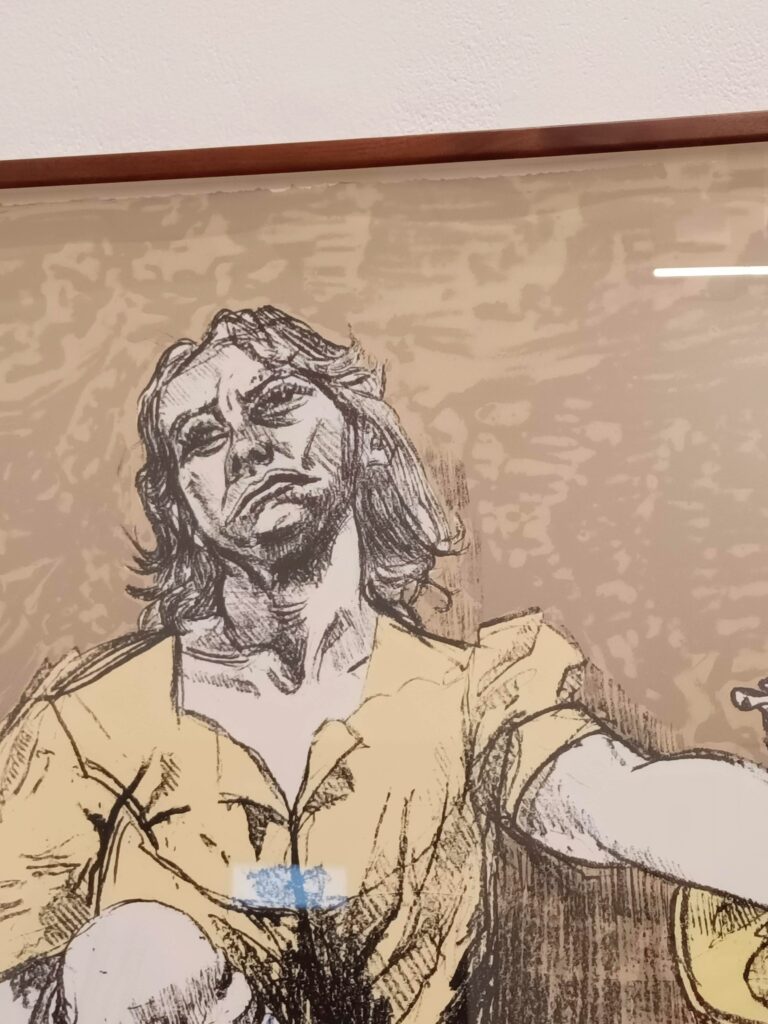Of late, the Arnolfini art centre in Bristol, has been hosting some brilliant exhibitions- contemporary, yet accessible. Their Paula Rego print show is no exception.
‘Paula Rego: Subversive Stories’ showcases the print output of Dame Paula Rego RA, from her days at the Slade in the 1950’s, all the way through to her current work via Jane Eyre, the Pendle Witches and her change-making abortion series.
The first series of prints to catch my eye were the fairytale etchings from the 1980’s. Re-imagining well-known fairytales as dark dreams, Rego exhibits her penchant for bursting the bubble of innocence that so often surrounds children, young women and even women themselves. Some of these images pick up on the ambivalence of motherhood, the love and resentment intertwined- such as in ‘Rock a Bye Baby’. Often playing with scale, age and ideas of innocence and submission- in one print Rego pictures small women bathing rather grotesque, submissive, grown men.

Having also attended the talk given by Rego’s printmaker and collaborator in the 1980s, Paul Coldwell, I know how technically brilliant these prints are- with Rego often completely re-making a printing plate before printing- no mean feat when using aquatint and etching. It also gave me an insight into how much Rego collaborated, some might say used, other people’s knowledge and skills, though the stories are all hers.

In some ways we might say she had collaborated with the authors whose work she has interpreted- even long dead ones. Perhaps taking Jean Rhys’s elaboration and interpretation of one character’s life in Jane Eyre to create a completely unique work of art in it’s own right- ‘Wide Sargasso Sea’- as inspiration, Rego’s own re-imagining of Jane Eyre through large scale lithographic prints- some almost life size- can really take your breath away.

When viewing these works, it really feels like you’re meeting a character, witnessing a scene. These are not illustrations, but a way to enter into the story of a life. I love to see her interpretation of Jane, with all the practical details she would have had to contend with- voluminous dresses, petticoats and laced boots, intermingled with her dream world and imagination- which of course all our lives are.
Dresses and women’s clothing appear to be an interest for Rego. Hiding, revealing, hindering, seducing, holding in. Indeed her studio, as described in later years, seems to resemble the backstage of a theatre.
In a separate room are the smaller, astounding, abortion series, which Rego created after the referendum in her native Portugal, continuing the ban on abortion. In this series she doesn’t need scale to convey the squalor, sadness and shame of abortion at home. The faces of her protagonists saying much of what needs to be said. The domestic everyday-ness of many of the ‘props’ to these scenes are heartbreaking. My feeling is that only a woman could have made these images (and I don’t say that lightly). One has the feeling Rego knows the terrible, banal backdrop to so much domestic misery and heartbreak.
These pieces are stunning, in the true sense of the word, and in some ways form the quiet, dark, still heart of the exhibition.
Actually, it’s the faces that start to lodge themselves in the mind as you go through the exhibition (loosely chronologically ordered, and beautifully curated and hung, by the way). Sometimes they look directly at us, challenging, questioning. Sometimes, furtively away and sometimes hopefully up- ‘from whence my help will come’.

The overall impression is distinctly political and domestic. Innocent and feminist. The feeling I left with was a profound sense of gratitude that someone in this world had chosen, and was willing and able, to tell these stories, in all their messy, scary, everyday, glorious sprawl. That, after all, is why we make- to tell our stories- and these are exquisitely done.
The exhibition continues until May 29th 2022.